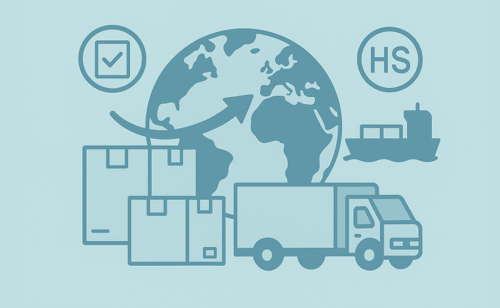As one of Europe's largest online marketplaces, the Netherlands has an exceptionally good postal infrastructure that makes trading with its population easy. This guide gives you everything you need to know as an online seller to get the most out of the Dutch E-commerce market.
Netherlands Online Shopping and eCommerce Guide
For international online sellers, trading in the Dutch E-commerce market should be considered almost compulsory. The facts speak for themselves: the country is ranked as the 20th richest nation by the World Bank GDP per capita rankings; 96% of its population enjoys access to the Internet; it's the sixth biggest marketplace in Europe, and growth of online shipping was around 20% in 2016.
What makes the market particularly appealing, however, is how easy it is to trade in. Its population mostly speak English fluently, making communication easy, and its highly developed postal network makes delivering products simple and speedy. Do your research, get your pricing and postage service right, and you'll be wondering why you didn't go Dutch sooner. Here's everything you need to know to capitalise on this lucrative market.
The right type of growth
While the number of online buyers in the Netherlands hasn't increased a great deal in recent years, what has driven that healthy growth rate of 20% is the way existing buyers are shopping. That is, they are buying more regularly and then spending more money when they do make purchases. This is great news for the online seller, as it means increased sales without the hassle of setting up and managing new accounts and earning the hard-won trust and loyalty of new customers.
It also means that there's good potential for future sales growth. With only 59% of Dutch internet users currently buying online, that leaves a sizeable portion of the population still to be converted - which is sure to happen in the coming years. If you set yourself up now and build a good reputation in the market, you're setting yourself up for an easy win further down the line.
The biggest sellers
Fashion is the biggest sector in the Dutch online marketplace, accounting for almost a third of the 12.7 billion euro total revenue. This share is expected to grow even further over the coming years, too, so that over a third of the predicted 14.5 billion euro revenue will come from fashion products by 2020. The next biggest market is the toys, hobby and DIY sector, enjoying a market share of around 25%, while electronics and media, such as vinyl, are next at just over 20%.
The biggest markets
Females are more avid online buyers, marginally outnumbering male internet shoppers. And when it comes to age, the biggest market is the 35-44 age range.
Trust and loyalty
You can win over a Dutch buyer's heart in much the same way you can the heart of any other buyer's: with competitive prices. But you should by no means rely solely on low prices, as there are numerous other factors at play; clear and transparent prices and offers also appeal to consumers. Yet it comes down to more than just your product pricing policies...
Good local delivery options are a must. The Dutch have high standards when it comes to delivery services, so you have to keep your own standard high even if you're posting from abroad. Similarly, a simple and efficient returns service is vital in persuading Dutch buyers to part with their cash. We can help your online business provide both, with our world-renowned partner carriers.
Finally, a good way to win trust in this market is to use an established domestic marketplace. Amazon, eBay, Bol, Aliexpress and Zalando and some of the biggest. Bol, in fact, is the largest online store in the Netherlands.

Marketing online in the Netherlands
The way to communicate with the Dutch market is the same as any other. Search marketing, social media platforms (Facebook is by far the most popular of these), email marketing campaigns and direct mail are all useful channels to use in order to reach Dutch buyers. If your budget allows, we recommend using a local specialist market agency who really understands what appeals to your market.
How the Dutch like to shop online
52% of the Dutch population had a smartphone in 2015. In 2018, it's predicted to be 76%. With a growth rate like that, it's hardly a surprise that shopping online with a smartphone is becoming increasingly popular in the Netherlands, with 28% of online shoppers using their smartphone for at least one purchase in the last quarter of 2017. However, tablets are still the preferred option when it comes to mobile shopping, with 65% of the share in mobile sales to the smartphone's 35%.
That said, mobile sales account for only 18.3% of overall online retail sales still, proving that the desktop is still king for internet shopping. In other words, make sure your website or selling platform is compatible with every type of device, to ensure you don't miss out on a single sale.
How they like to pay
The Dutch bank-to-bank payment system, iDeal, accounts for a huge 56% of all online transactions in the country, which makes it pretty much a compulsory offering if you want to make your efforts in the market worthwhile. Of the remaining most-common payment options, credit cards make up 12% of payments, while PayPal only 5%.
The best way to send
Thanks to the excellent logistics network that serves the Netherlands, the country is highly accessible wherever you're sending from. We work with couriers that make the very most of this infrastructure, so there's no need to waste time searching out the best courier service at the best price - simply enter the details of the package you want to ship and we'll find you the right delivery service at a very competitive price.
With our expedited shipping services, like International Drop Off (by FedEx), for example, we can get your package to any major Dutch city in two to five working days. With Dutch shoppers expecting faster delivery times than those of other European countries, having a fast and reliable service such as this is vital if you want to retain your customers.
Delivery information
Three-quarters of Dutch internet shoppers want lots of information about the delivery service and options available, whether that's on the product info page or the order page. They also want to be kept updated, so notification messages (preferable over SMS or apps) detailing the progress of orders are a good idea. Dutch shoppers more than most also prefer to have a delivery time slot, so try to provide this.
It is also wise to offer free shipping to encourage more sales, and our economy shipping services like DHL eCommerce and TrakPak, both of which are tracked mail are another option for lower value and less urgent types of package.
Packaging requirements
The Netherlands doesn't have any specific postal regulations, but it's important to always refer to the packaging rules for your industry or the product your sending. Likewise, you should also refer to your chosen courier's prohibited item list. You can find ours here.
Taxes and duties
This can be quite a complicated matter, so it's best to consult the Dutch customs authority, which provides guidance that is useful for both consumers and businesses and our information on the topic too. In short, though, you should complete the Customs section in the Parcel Monkey booking process accurately and provide a detailed description of the items in your package and their true market value. Listing an item as a gift won't mean you avoid duty all the time, Customs Officers will still be checking the value of your goods.
Once you have placed an order, you should print out 3 copies of the Customs Invoice and attach them to the outside of the box in a clear plastic wallet or envelope, or failing this an envelope marked 'Customs'. All packages are shipped DDU and it is the recipient's responsibility to pay any duty owed in order to release the package for delivery so provide accurate contact details and make them aware of the Customs rules.



